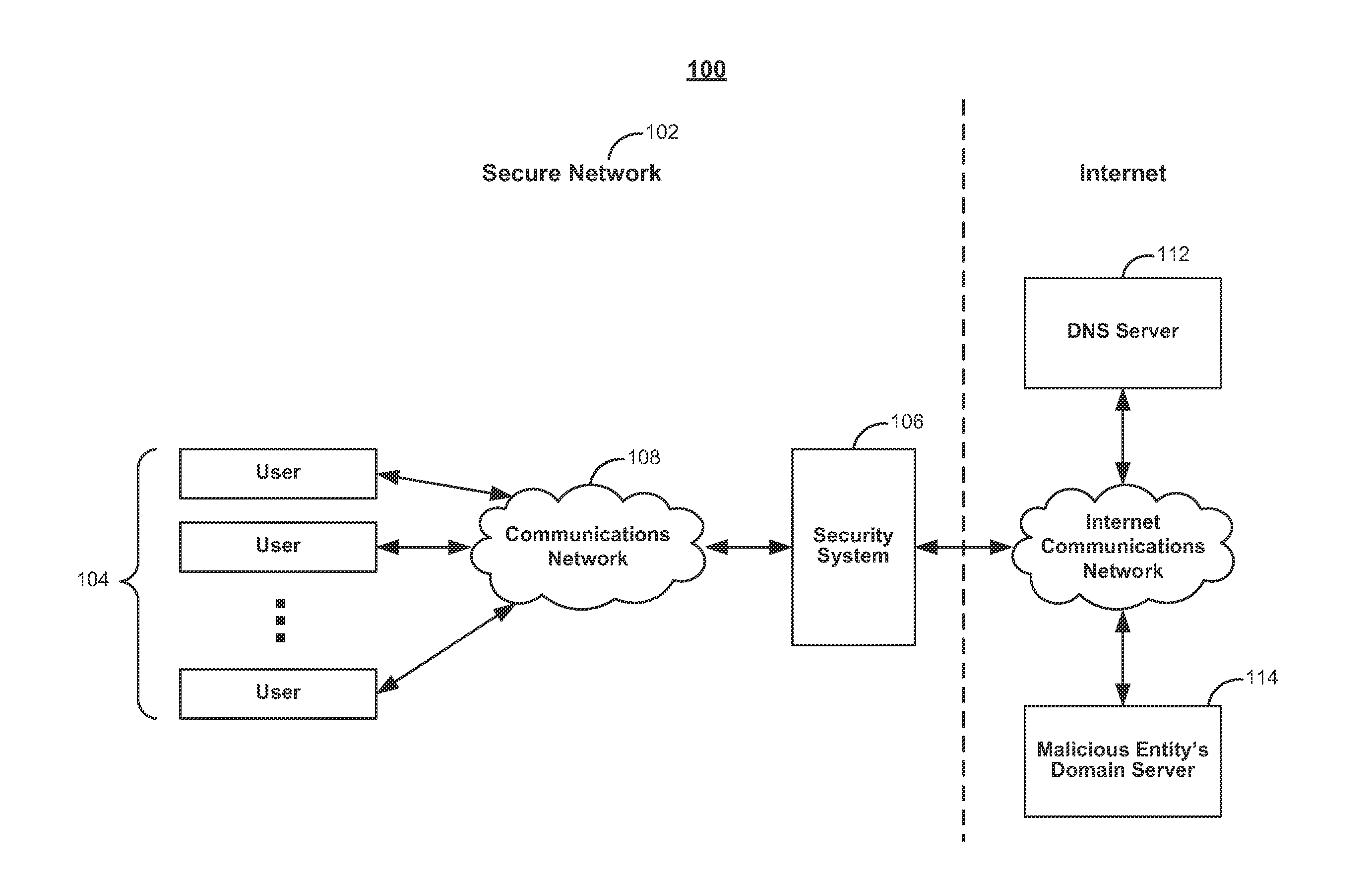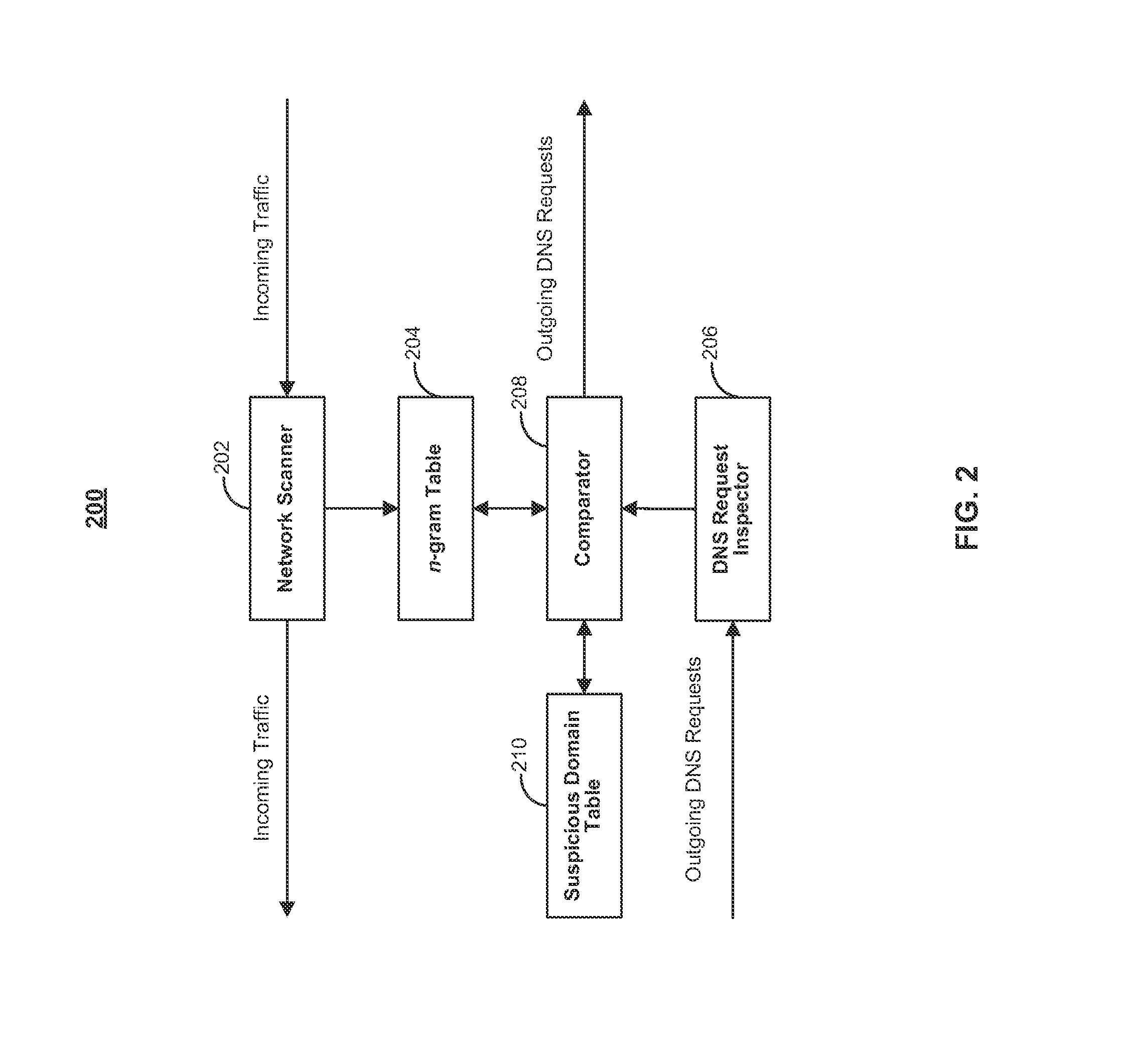Systems and methods for detecting covert DNS tunnels
a technology of covert dns tunnels and detection methods, applied in the direction of error detection/correction, instruments, unauthorized memory use protection, etc., can solve the problems of uncompressing the network, current systems using computationally intensive algorithms or visualization techniques,
- Summary
- Abstract
- Description
- Claims
- Application Information
AI Technical Summary
Benefits of technology
Problems solved by technology
Method used
Image
Examples
Embodiment Construction
[0016]To provide an overall understanding of the invention, certain illustrative embodiments will now be described, including systems and methods for detecting covert DNS tunnels using n-grams. However, it will be understood by one of ordinary skill in the art that the systems and methods described herein may be adapted and modified as is appropriate for the application being addressed and that the systems and methods described herein may be employed in other suitable applications, and that such other additions and modifications will not depart from the scope hereof.
[0017]Herein an n-gram refers to a sequence of characters or any suitable sequence of phonemes, syllables, or words, where n may be any suitable integer. For example, when n equals 7, an individual n-gram may include 7 characters, phonemes, syllables, or words from source data depending on the type of information used to create the n-gram. In the embodiments described below, any reference to an n-gram refers to an n-gram...
PUM
 Login to View More
Login to View More Abstract
Description
Claims
Application Information
 Login to View More
Login to View More - R&D
- Intellectual Property
- Life Sciences
- Materials
- Tech Scout
- Unparalleled Data Quality
- Higher Quality Content
- 60% Fewer Hallucinations
Browse by: Latest US Patents, China's latest patents, Technical Efficacy Thesaurus, Application Domain, Technology Topic, Popular Technical Reports.
© 2025 PatSnap. All rights reserved.Legal|Privacy policy|Modern Slavery Act Transparency Statement|Sitemap|About US| Contact US: help@patsnap.com



